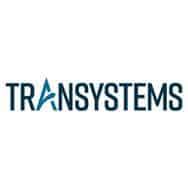Engineers thrive as problem-solvers. Whether optimizing a production line, designing a bridge abutment on challenging terrain, or writing elegant code, your expertise lies in identifying challenges, understanding their implications, and crafting solutions. But here’s the key to standing out: It’s not just about performing a function — it’s about showcasing your problem-solving skills. Creating thought-leadership content that highlights your ability to tackle complex challenges can help you gain an edge in your career and attract the opportunities you desire.
Why Your ‘Personal Brand’ Matters
Many engineers miss the mark by focusing mostly on their credentials — degrees, certifications, and years of experience. While these are essential, they’re not what sets you apart. Employers aren’t just hiring a “role-filler” — they’re seeking someone who can tackle their unique challenges.
That’s where your personal brand comes in. Think of it as the unique blend of skills, values, and experiences that define how others see you. For engineers, a powerful personal brand revolves around one question: What kinds of problems can you solve?
Real-world Examples of Thought Leadership
Tackling supply chain inefficiencies with AI
In a study group I’m part of, we explored challenges in the fashion industry — where overproduction sends excess inventory to landfills, while plus-sized customers often struggle to find clothing that fits. This disconnect isn’t just wasteful — it’s discriminatory.
A logistics expert in the group proposed an AI-based solution. By analyzing purchase histories, AI can predict demand patterns and guide manufacturers to produce the right quantities for each size. This approach could reduce waste, minimize costs, and make fashion more inclusive.
I encouraged her to turn this idea into a LinkedIn article. By showcasing her ability to address a logistics problem with social implications, she’s building a personal brand as someone who uses technology to make a difference. It’s the kind of insight that prospective employers or clients notice.
Navigating nature-related financial risks
Another client, an environmental and engineering firm, wanted to demonstrate expertise in the Taskforce on Nature-related Financial Disclosures (TNFD). This global standard helps companies assess how they impact nature (e.g., biodiversity loss, pollution) and how nature impacts them (e.g., floods, wildfires).
We developed content explaining TNFD compliance and how businesses could leverage my client’s expertise to build better relationships with stakeholders, ranging from investors to communities. Publishing this thought leadership in an industry periodical and on their website positioned my client as a go-to resource for navigating TNFD challenges.
Both examples illustrate how engineers can use thought leadership to demonstrate their problem-solving prowess and align with the values of the people they aim to work with.
How to build your own thought leadership content
Building your personal brand as a problem-solver is a simple four-part process.
1. Identify problems you care about
Start by listing challenges where you want to plant your flag. Focus on issues that:
- Resonate with you personally — you’ll bring more energy and creativity to solutions you care about.
- Align with your skills and experience — your insights should carry authority.
- Matter to your target audience — if the problem isn’t pressing for them, your efforts might miss the mark.
2. Do your research
Stay informed about your chosen topic. What’s new? Are there recent studies, emerging technologies, or shifts in regulations? Understanding the latest developments ensures your content is timely and relevant.
3. Create compelling content
Follow this simple structure:
- Introduce the problem: What’s the challenge, and why does it matter? Keep it concise.
- Highlight the stakes: What happens if the problem goes unresolved?
- Offer solutions: Share actionable insights or recommendations to address the issue.
4. Share it widely
LinkedIn is a great starting point. Publish your article on your profile to reach your network and demonstrate your expertise. You can also pitch your ideas to industry magazines, professional newsletters, or other third-party outlets for broader visibility.
Don’t stop at text. Use videos (LinkedIn loves these) to showcase your personality, or use infographics to make complex ideas more digestible. Tools like Canva make creating visual content easier than ever.
Take the first step
Ask yourself: What do I want to be known for? By creating thought leadership content around the problems you solve, you can position yourself as a go-to professional who makes life easier for the people you want to work with. Start today — your career will thank you.
About the Author
Carl Friesen is Principal of Thought Leadership Resources, which helps professional services firms demonstrate their expertise to potential clients. Learn more at ThoughtLeadershipResources.com.
We would love to hear any questions you might have or stories you might share about unlocking remarkable career results through showcasing your problem-solving skills.
Please leave your comments, feedback or questions in the section below.















